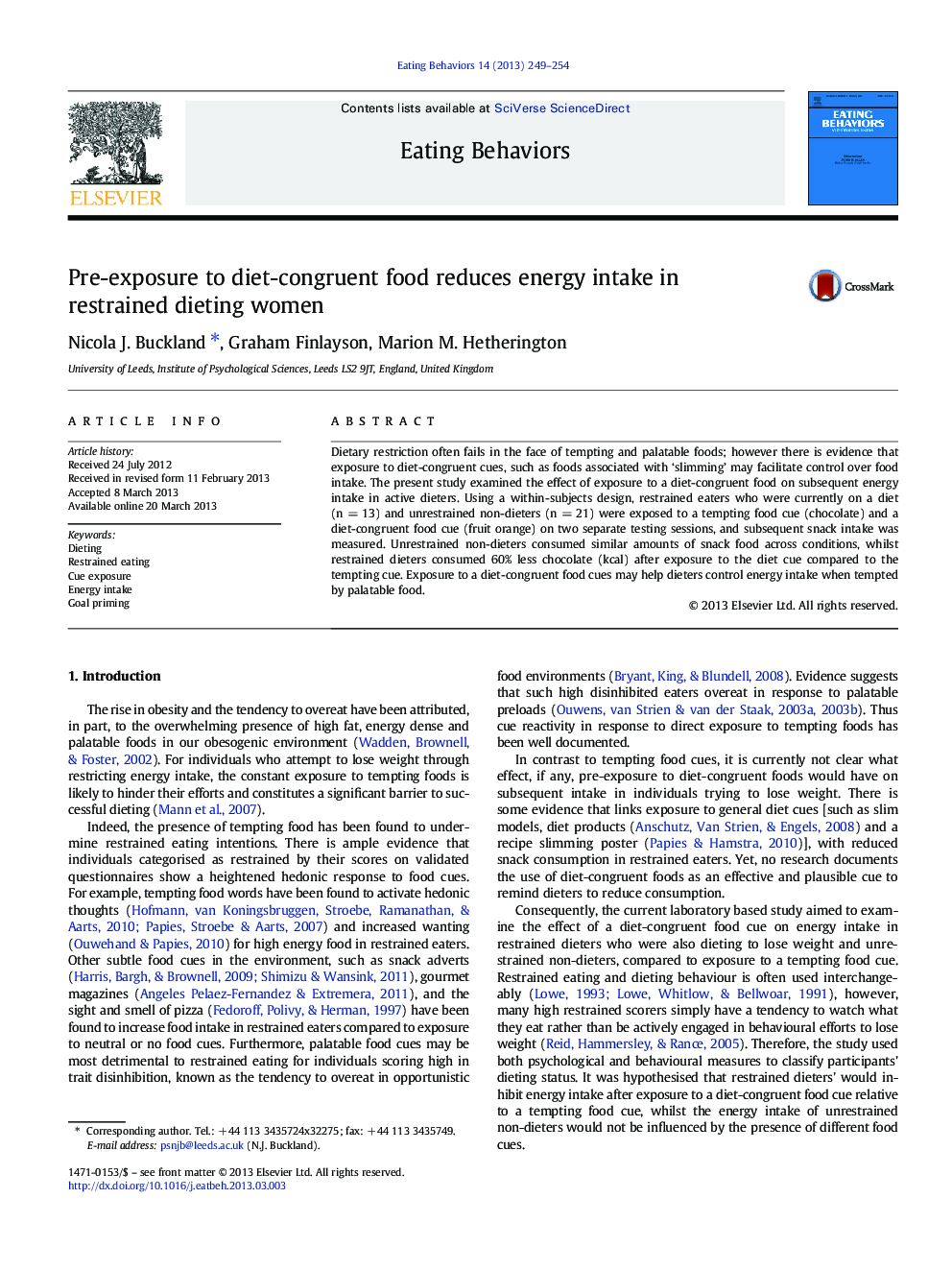| Article ID | Journal | Published Year | Pages | File Type |
|---|---|---|---|---|
| 906618 | Eating Behaviors | 2013 | 6 Pages |
•Restrained dieters suppress food intake after pre-exposure to diet-congruent food.•Diet-congruent food reduces restrained dieters' intake of a tempting snack.•Exposure to diet-congruent food improves diet adherence.
Dietary restriction often fails in the face of tempting and palatable foods; however there is evidence that exposure to diet-congruent cues, such as foods associated with ‘slimming’ may facilitate control over food intake. The present study examined the effect of exposure to a diet-congruent food on subsequent energy intake in active dieters. Using a within-subjects design, restrained eaters who were currently on a diet (n = 13) and unrestrained non-dieters (n = 21) were exposed to a tempting food cue (chocolate) and a diet-congruent food cue (fruit orange) on two separate testing sessions, and subsequent snack intake was measured. Unrestrained non-dieters consumed similar amounts of snack food across conditions, whilst restrained dieters consumed 60% less chocolate (kcal) after exposure to the diet cue compared to the tempting cue. Exposure to a diet-congruent food cues may help dieters control energy intake when tempted by palatable food.
